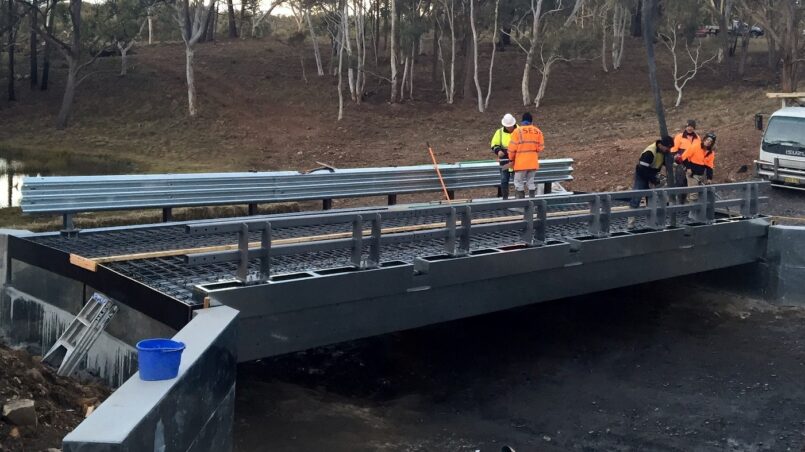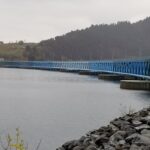When it comes time to replace many bridges, we as engineers find ourselves in a philosophical conundrum. The easiest way to replace a bridge is to shut it down, knock it down and build a new one. That’s fine – if you want to be publicly executed in the town square. In many cases, the bridge is newer than the houses which surround it. To the very logical engineering mind, what the heck did these people do before the bridge was built? Couldn’t they survive without it for a couple of years while we replace it?
But in some cases the bridge outdates the people around it, in which case life was made possible by that bridge. Once you build it, they’ll never let you close it, take a lane, even hint that it might at some point need a bit of maintenance. It is to many people something that is taken for granted. Like a car – get in, turn the key and…it doesn’t start. Time for the junkyard and get me something that will run forever! If only replacing a bridge were that simple.
Engineers have evolved in their ability to be clever – they have to. Staging schemes all over the world keep an increasingly busy traveling public moving. One lane alternating traffic, detour bridges, build it off to the side and roll it in later, etc. But one thing we haven’t mastered as engineers is dropping a bridge out of the sky. So if you have figured that out, shoot me an e-mail – we need to talk.
Now we haven’t mastered the snap of the fingers move and a completed bridge appears, but we do have ways to build a bridge very quickly. Donald Bailey figured this out before the outbreak of World War II and Guy Mabey took the concept and expanded upon it. Developed for the war effort, modular steel bridges could be erected across rivers to help advancing armies. Though designed to be temporary in nature, there are many places where these bridges are being used in a permanent capacity.
But what about a modular bridge that was designed to be permanent? Well, there is one outfit that has come up with just that and its name succinctly describes exactly what it does well – InQuik.
InQuik is the brainchild of inventor Bruce Mullaney. Developed as a way to build bridges in remote areas of Africa, the InQuik system is an innovative semi-modular method to construct bridges up to 18 meters long. There are two main parts to the system, the metal formwork tray and the steel reinforcement cage. These two parts are integrated together and are set on site and poured with concrete to form a fully in-situ concrete bridge structure.
The panels are designed to be transported and fit inside standard shipping containers. They can be placed side by side to essentially create any width of bridge desired. Lighter than other precast concrete pieces, a light crane is all that is usually necessary to set these panels in place. They are fully self-supporting and need no external support. Essentially the system combines a stay in place form system with the reinforcement.
The advantage to such a system is the speed of construction. In addition to the spans, many of the other components used to construct a bridge are available products by InQuik. This includes the wingwalls, abutment walls and piers. So really, the entire bridge comes almost fully preassembled. Simply erect the different panels and pour the concrete. According to Logan Mullaney, Managing Director for InQuik, an entire InQuik bridge can be erected and open to traffic in a week.
Now that just includes the InQuik components. Additional time is needed to build the foundation (shafts, piles or spread footings) which may add an additional two weeks, depending on bridge size. So it is entirely possible that you could have a bridge built in about a month (30 days) if you also consider the time required to tear down your old structure. That wouldn’t include other civil construction, however.
How does that compare to a normal bridge? While the number of working days will vary, for a typical single span prestressed concrete girder bridge you would be looking at anywhere from 120 to 140 working days for the bridge alone. That is a 75% savings on time down. Imagine not having to build a detour bridge, which takes up budget. Imagine being able to get in and get out quickly and not drag on over multiple seasons. I’m sure we’d all appreciate less construction on our roads.
InQuik is based in Australia and the company and its bridge system has really taken off there. In their third year alone, they will install 40 InQuik bridges. Even Australian maintenance crews have taken on building these interesting bridges. They have big plans to enter the United States market soon. Stay tuned as I expect we will see big things from this company in the future.
There may be some in the bridge engineering community who will scoff at any solution where stay in place forms are used. The typical comment is that they obscure the structure beneath. Without being able to see the structure beneath, they can’t know the true condition. Among the 50 states, there is no clear consensus on this issue – each state handles it differently. Many states allow stay in place formwork – it saves time and money and many find it an indispensable construction method.
There are ways around these concerns, like any problem in engineering. Service life design, which is beginning to gain more traction nationwide, aims to predict the service life of a structure based on the materials used and the location. States like Vermont are mandating a minimum of 100 years out of their bridges. They also allow the use of metal stay in place deck forms on their bridges. A contradiction, certainly not, just practical design.
In these times of increasing competition for public funds, increasing congestion on our roads and ever increasing costs due to environmental constraints, a solution like InQuik is even more important to have in your back pocket. A solution like InQuik will not be suited to every situation, nothing ever will. But in order to solve our growing backlog of infrastructure problems in this country, the world of bridge engineering must evolve to be inclusive of new technologies and ideas.
Views: 1773







Good day very nice blog!! Man .. Excellent .. Amazing ..
I’ll bookmark your website.
Having read this I thought it was very informative. I appreciate you spending some time and effort to put this information together. I once again find myself spending way too much time both reading and posting comments. But so what, it was still worth it!|